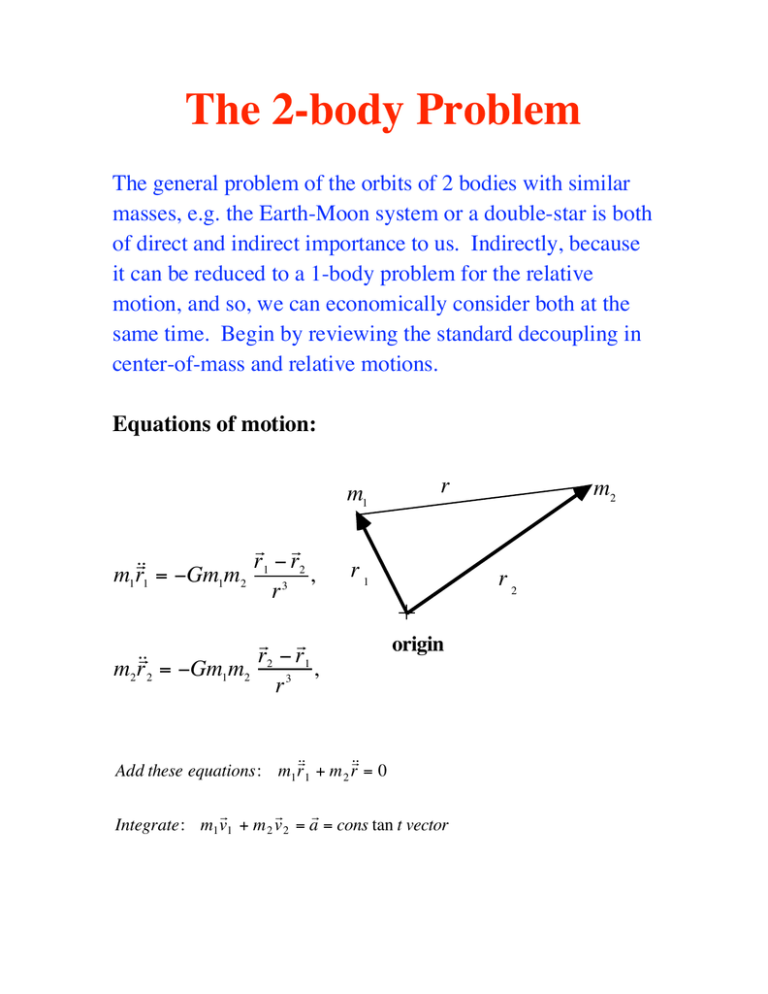The 2-body Problem
advertisement

The 2-body Problem The general problem of the orbits of 2 bodies with similar masses, e.g. the Earth-Moon system or a double-star is both of direct and indirect importance to us. Indirectly, because it can be reduced to a 1-body problem for the relative motion, and so, we can economically consider both at the same time. Begin by reviewing the standard decoupling in center-of-mass and relative motions. Equations of motion: m1 r r r˙˙ r1 - r2 m1r1 = -Gm1m2 , r3 r r1 r r r r -r m2˙r˙2 = -Gm1m2 2 3 1 , r m2 r2 origin r r Add these equations: m1 ˙r˙1 + m 2 ˙r˙ = 0 r r r Integrate: m1 v1 + m 2 v 2 = a = cons tan t vector r r r r Integrate again: m1 r1 + m 2 r 2 = at + b Let M = m1 + m 2 and r r m1 rr1 + m 2 rr2 r r R= , then M R = at + b . M I.e. Uniform Center-of-Mass Motion. Relative Motion: Consider a new (moving) coordinate system with its origin at the CM. r r -m 2 r R = 0, r 1 = r . m1 2 r m1 r ˆ r1 r˙˙ -Gm 2 Ê r Then, r 1 = r ˜ = -GM 3 , Á r1 + m2 1 ¯ r3 Ë r r r2 r˙˙ r 2 = -GM 3 . r r -GM r Subtract to get - ˙r˙ = r. r3 If this is written in the form: r r r˙ = v , r -GM r v˙ = 3 r , r then it is seen to be a system of 6 first-order ordinary differential equations. Thus, we expect 6 constants of integration. Three of these can be associated with the angular momentum vector. r r Pr oof : r x ˙r˙ = 0 d r r˙ r r r r but, ( r x r ) = r˙ x r˙ + r x ˙r˙ = 0 dt r r r \ r x r˙ = h = specific angular momentum.


